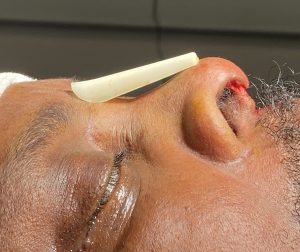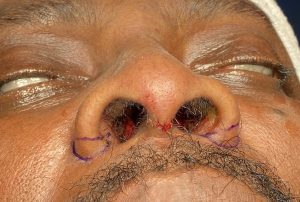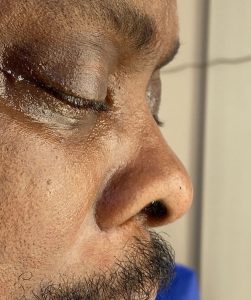Background: The shape of the nose is controlled by many anatomic components but one of the most significant is that of the septum. Serving as the central support for all of the nasal structures on top of it, its aesthetic contribution is in largely controlling the height of the bridge and the projection of the nasal tip. A low septum means the height of the nasal bridge and upper half of the nose its low. S short septum means the nasal tip is short and/or over rotated. Often these two occur together since it is a reflection of the septum’s overall development.
Augmenting the low nasal bridge can be done by a variety ion materials and grafts. Small amounts of bridge augmentation can be done by regional cartilage grafting (septum and ear) but more significant augmentations require the use of implants materials or a distant graft harvest. (rib) Nasal implants offer the advantages of an established preformed shape with a predictable outcome no need for a graft harvest, ease of insertion (and removal if needed) and are readily available. Their disadvantages are the risk of infection, migration and possible implant show.
Nasal implants are available in a variety of materials from solid silicone, ePTFE and Medpor. They are all implant materials so their risk of infection is most likely identical. What separates them is the amount of surrounding tissue adherence or ingrowth. Such tissue ingrowth influences the ease of insertion/removal as well as the risk of postoperative migration. Solid silicone gets encapsulated without tissue ingrowth, ePTFE gets limited tissue ingrowth to its surface due to its microfibrillar structure while Medpor gets aggressive tissue ingrowth due to the larger porosity of the material.
Changing the shape of the nostrils is a part of some rhinoplasty surgeries. It is usually done as the last step in the rhinoplasty because it is helpful to adjust the nostrils based on the shape of the tip. The most common form of nostril reshaping is narrowing which is usually done through an internal wedge excision which keeps the scar hidden. But when the nostrils get really wide and the nasal tip projection is short, a flaring shape occurs which will not be effectively reduced by an internal approach.
Case Study: This African-American male desired a nasal shape change focusing on two features, a low nasal bridge and wide flaring nostrils. He was happy with the projection and shape of his nasal tip.
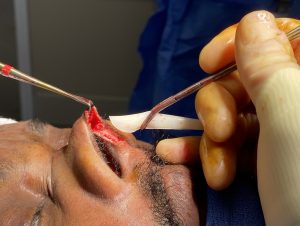
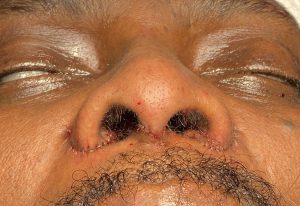
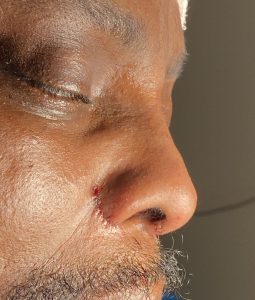
Case Highlights:
1) A significantly low nasal bridge can be augmented by an implant which has certain advantages and disadvantages over a rib graft.
2) Nasal implants can be placed through an open or a closed approach.
3) Reduction of significant nostril flaring requires full thickness nostril wedge ‘excision.
Dr. Barry Eppley
Indianapolis, Indiana



